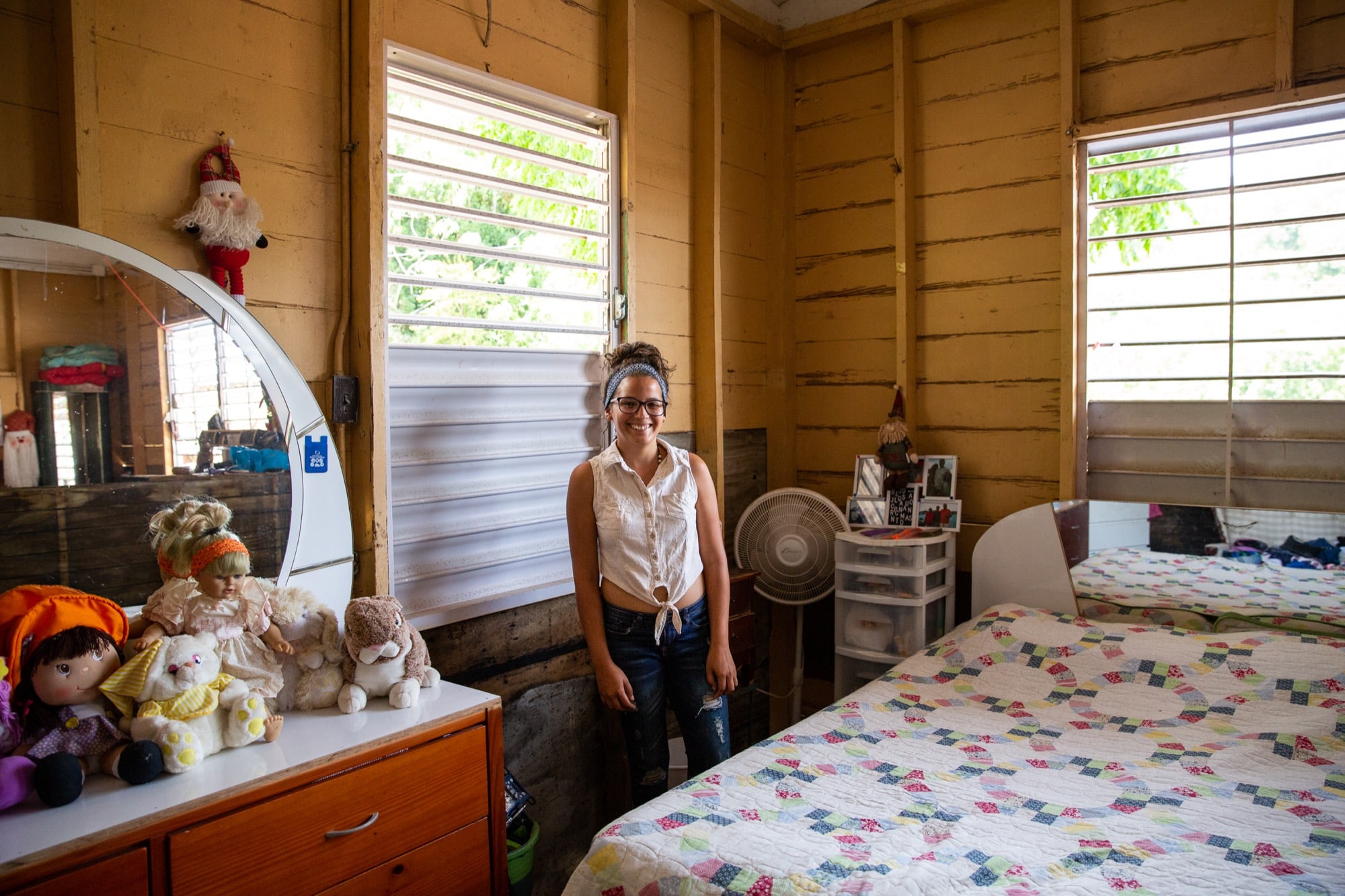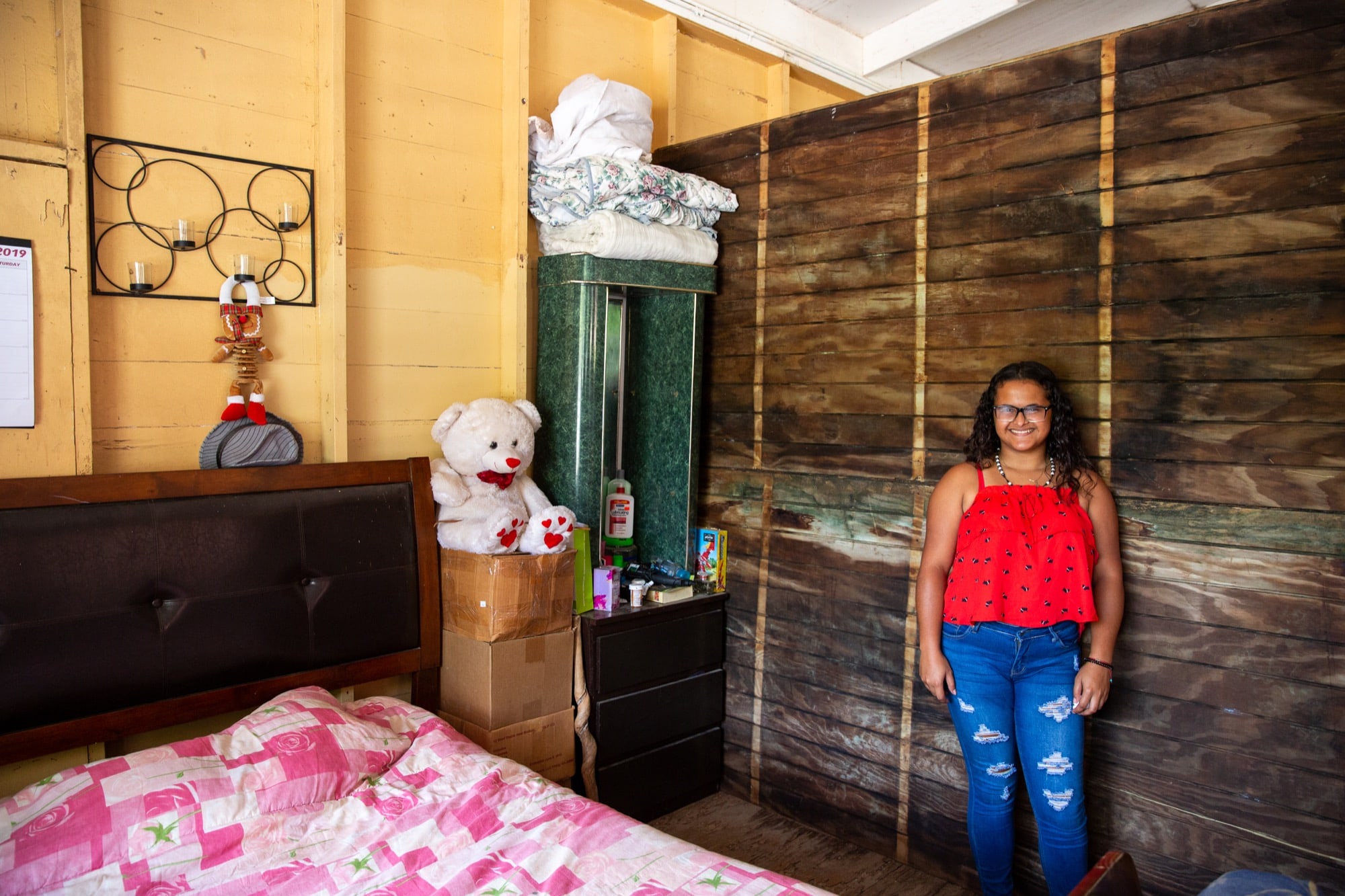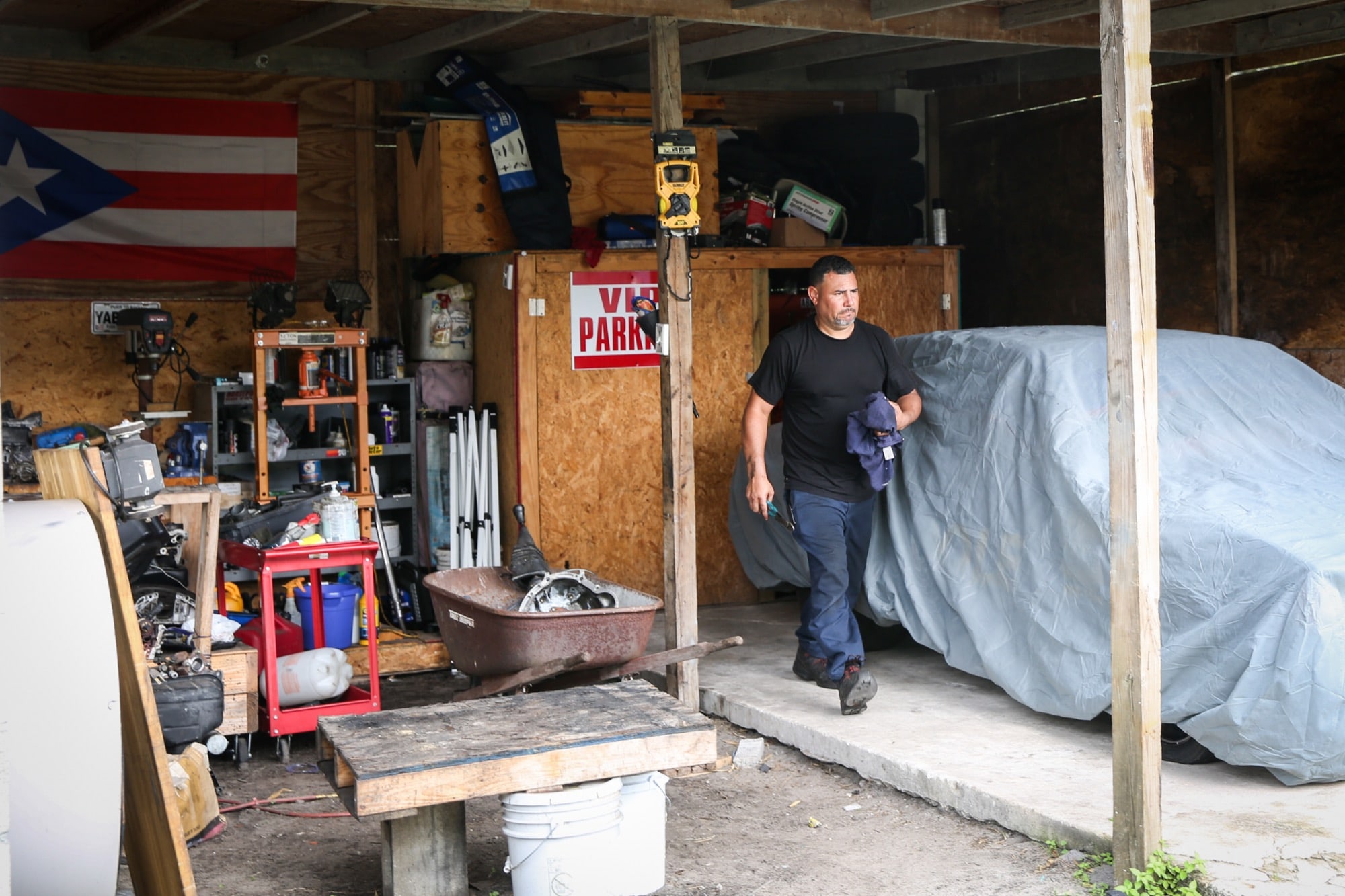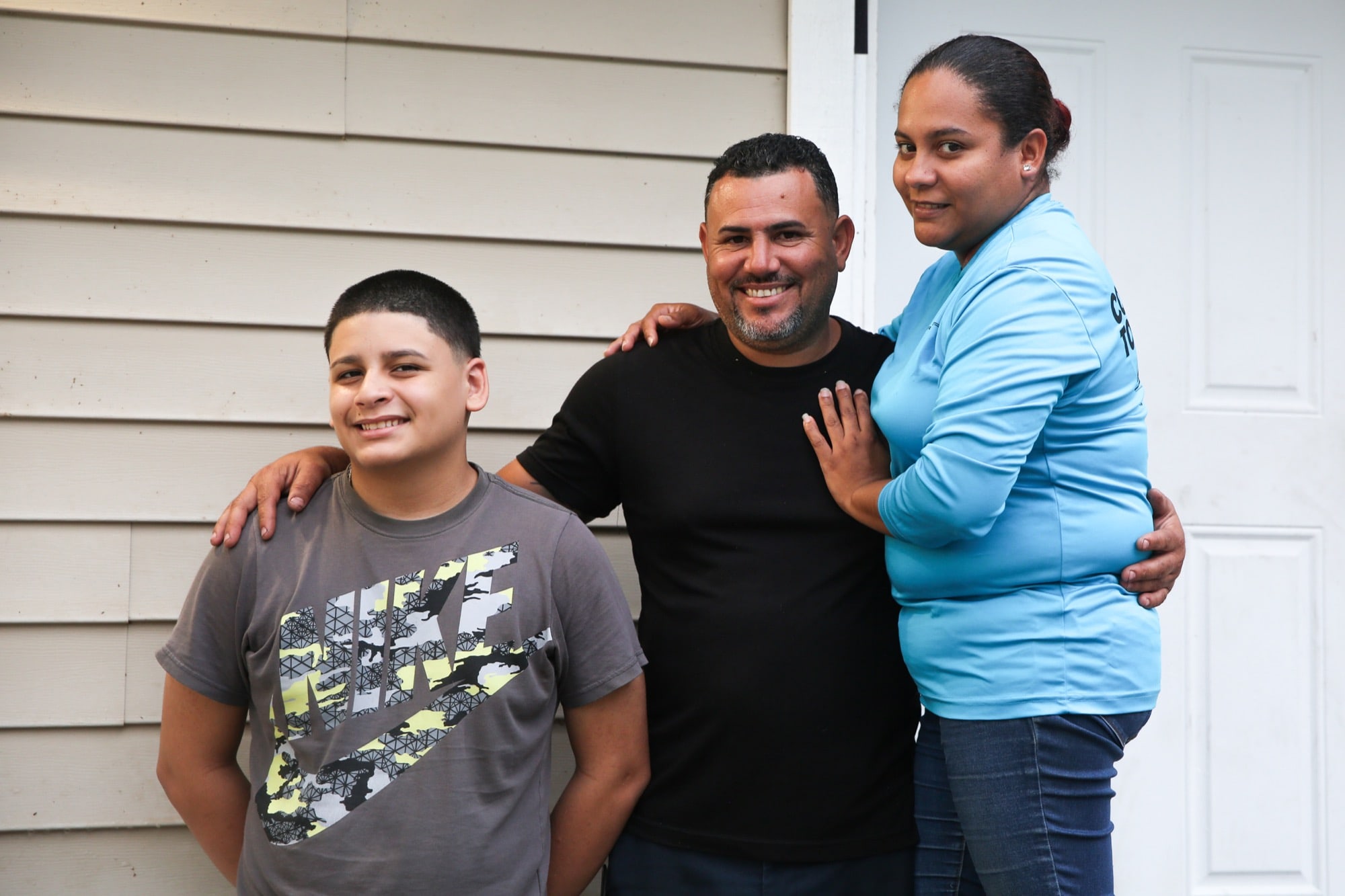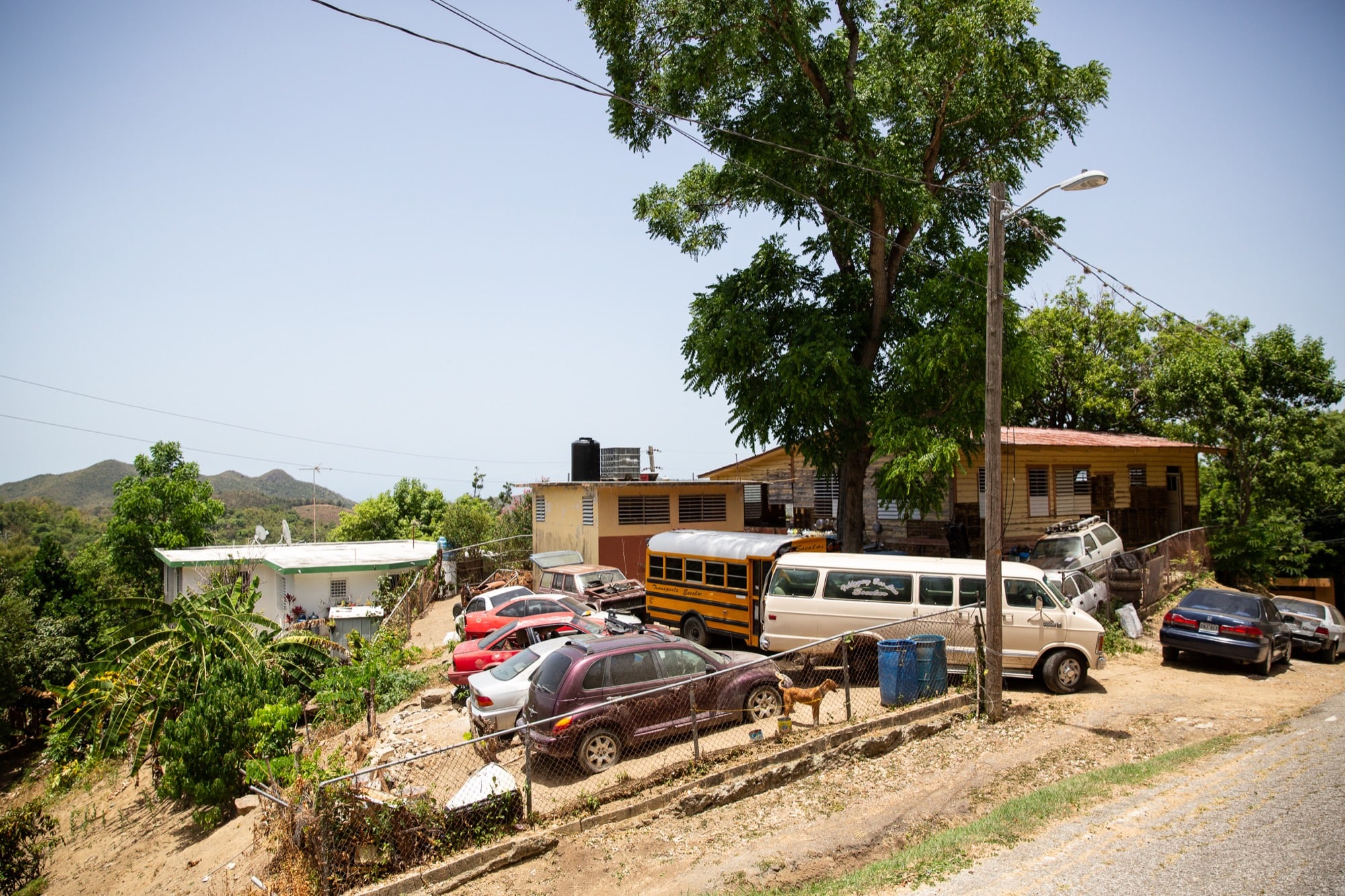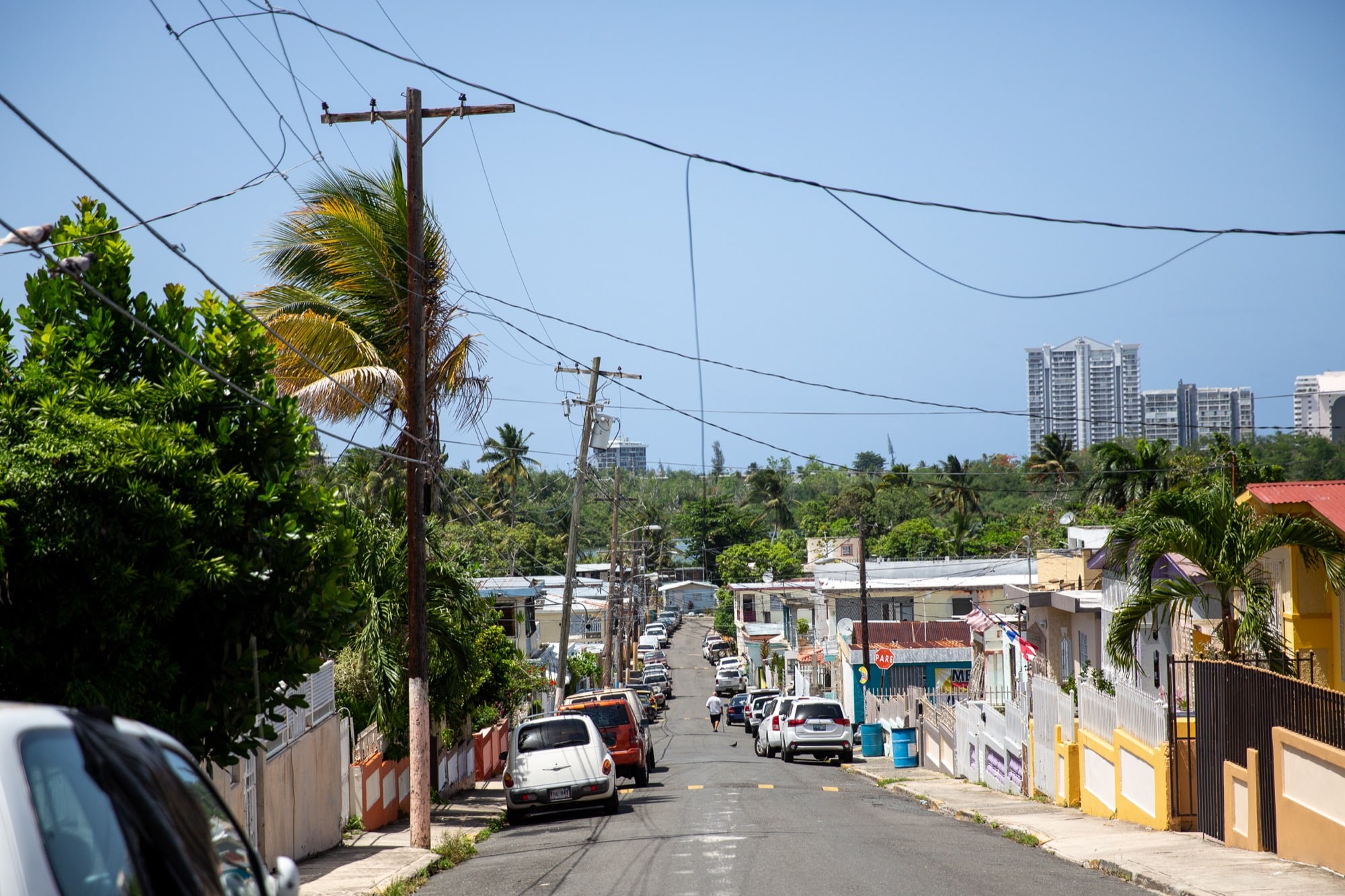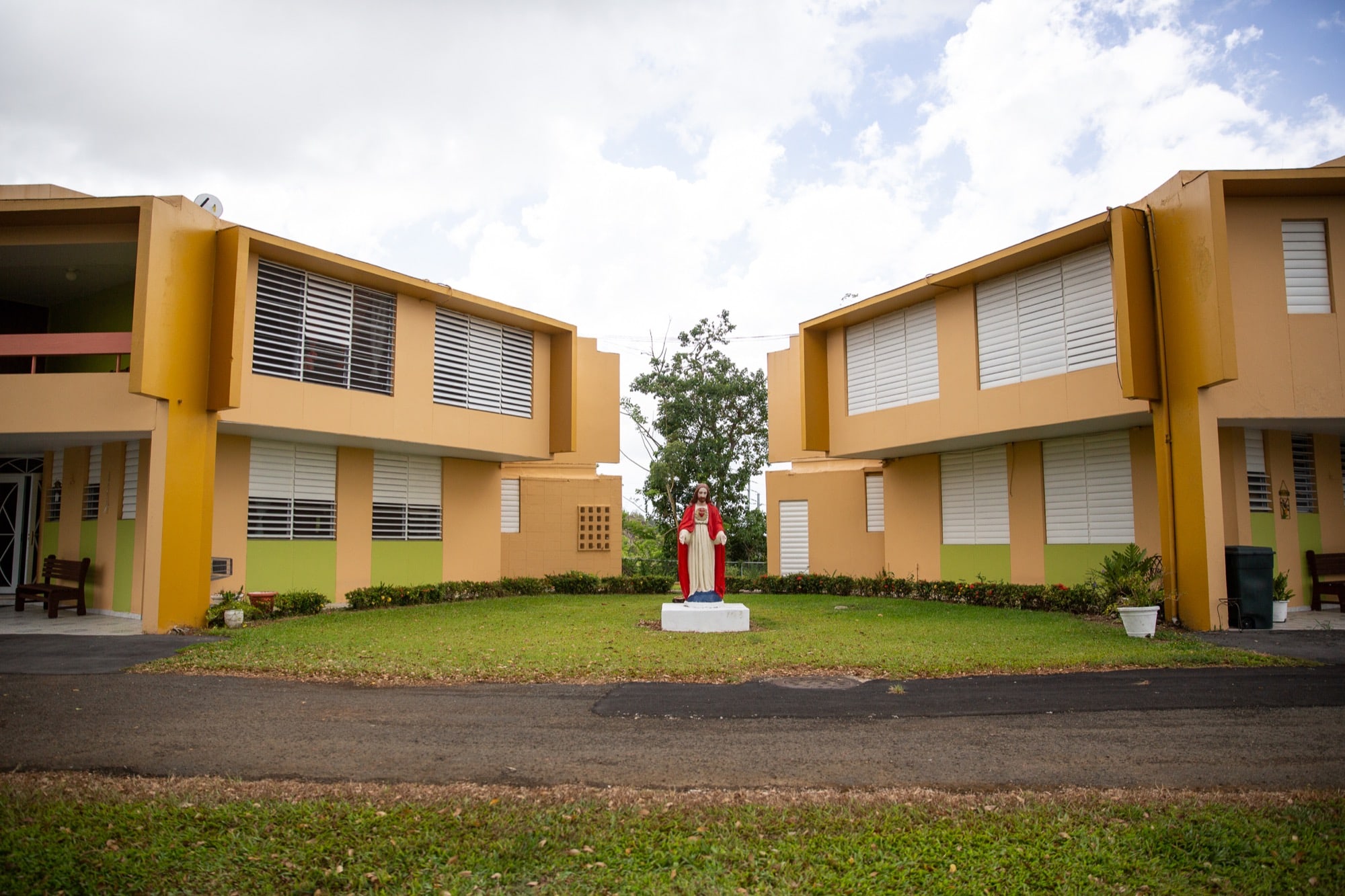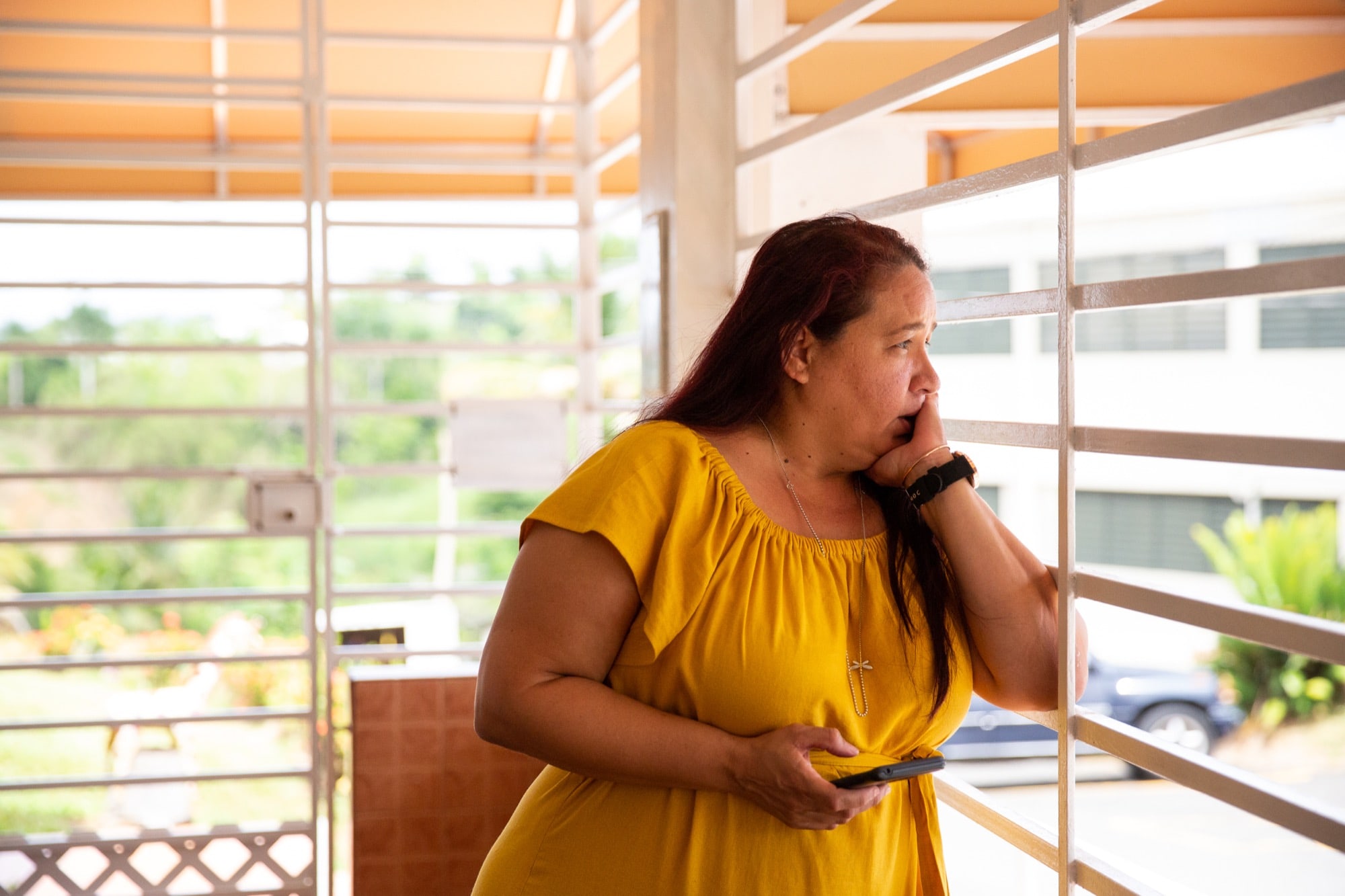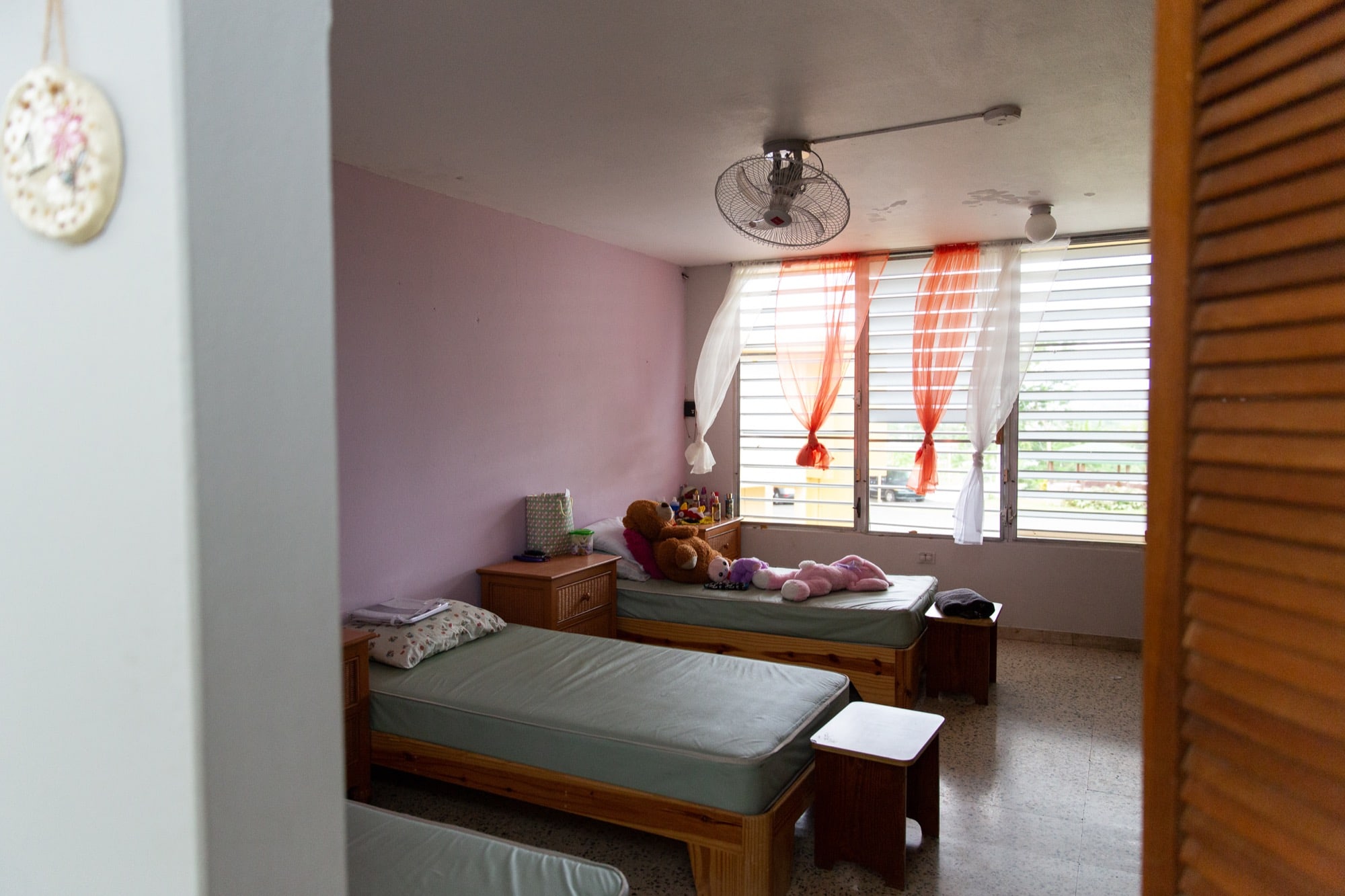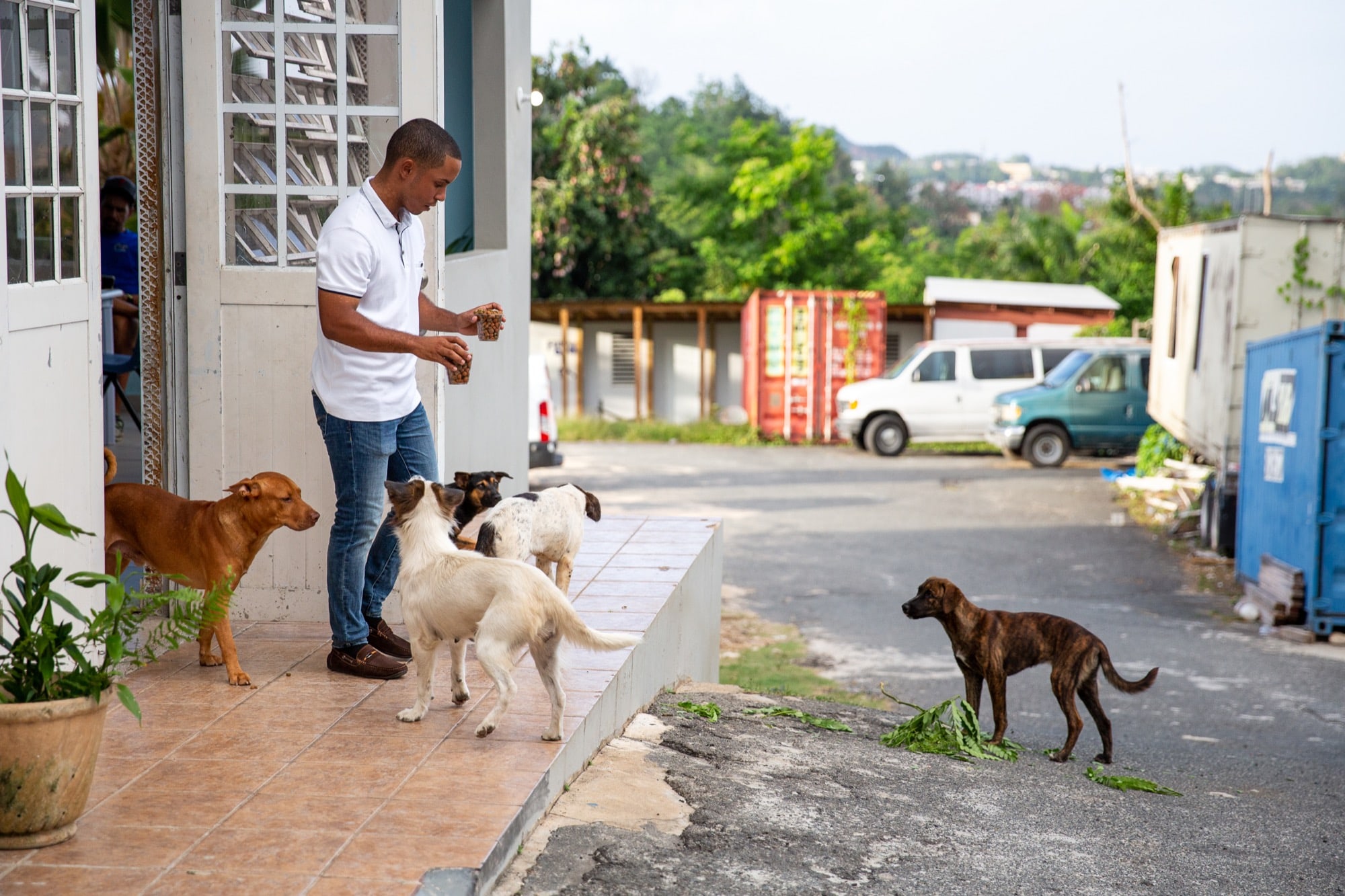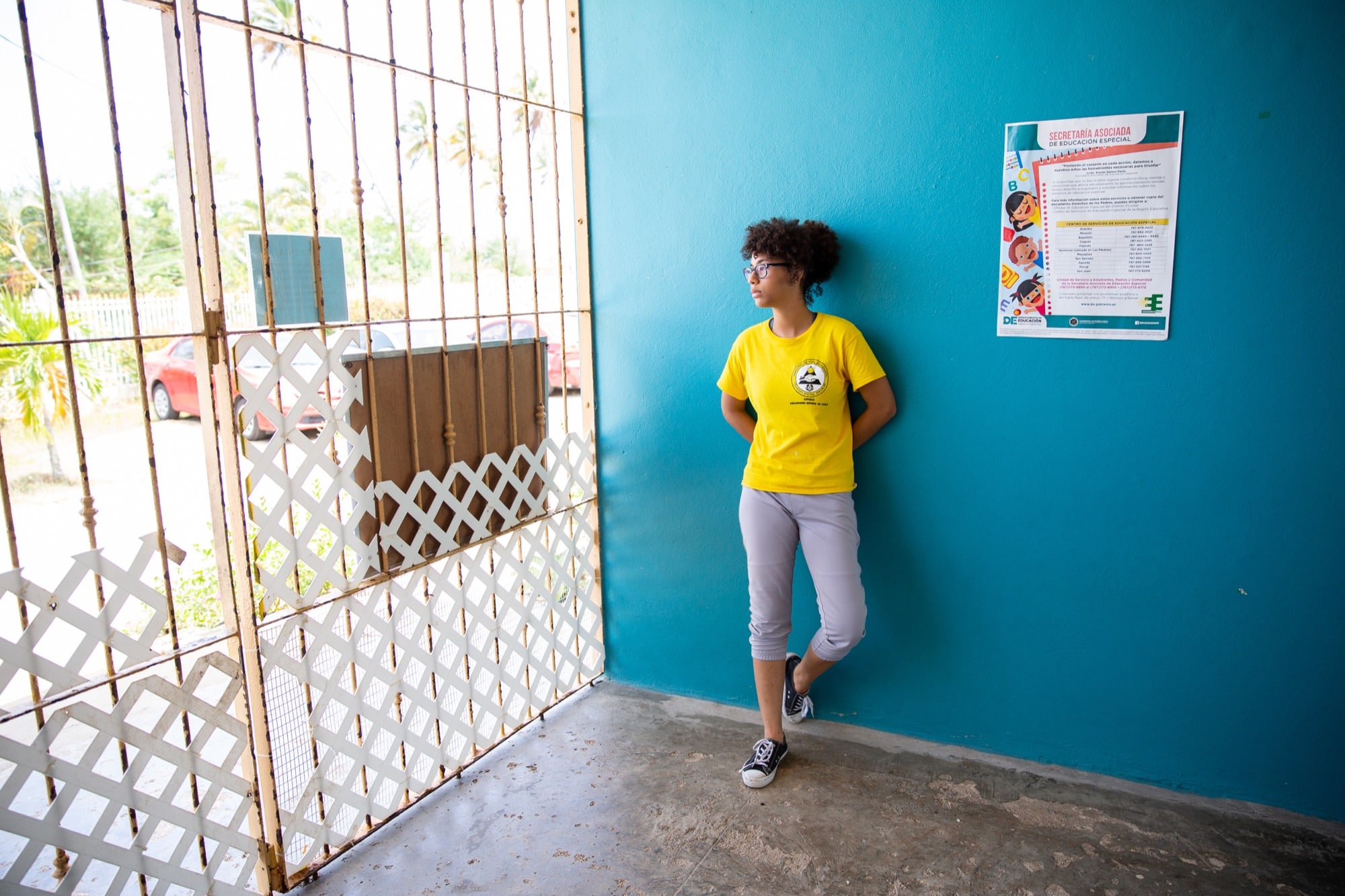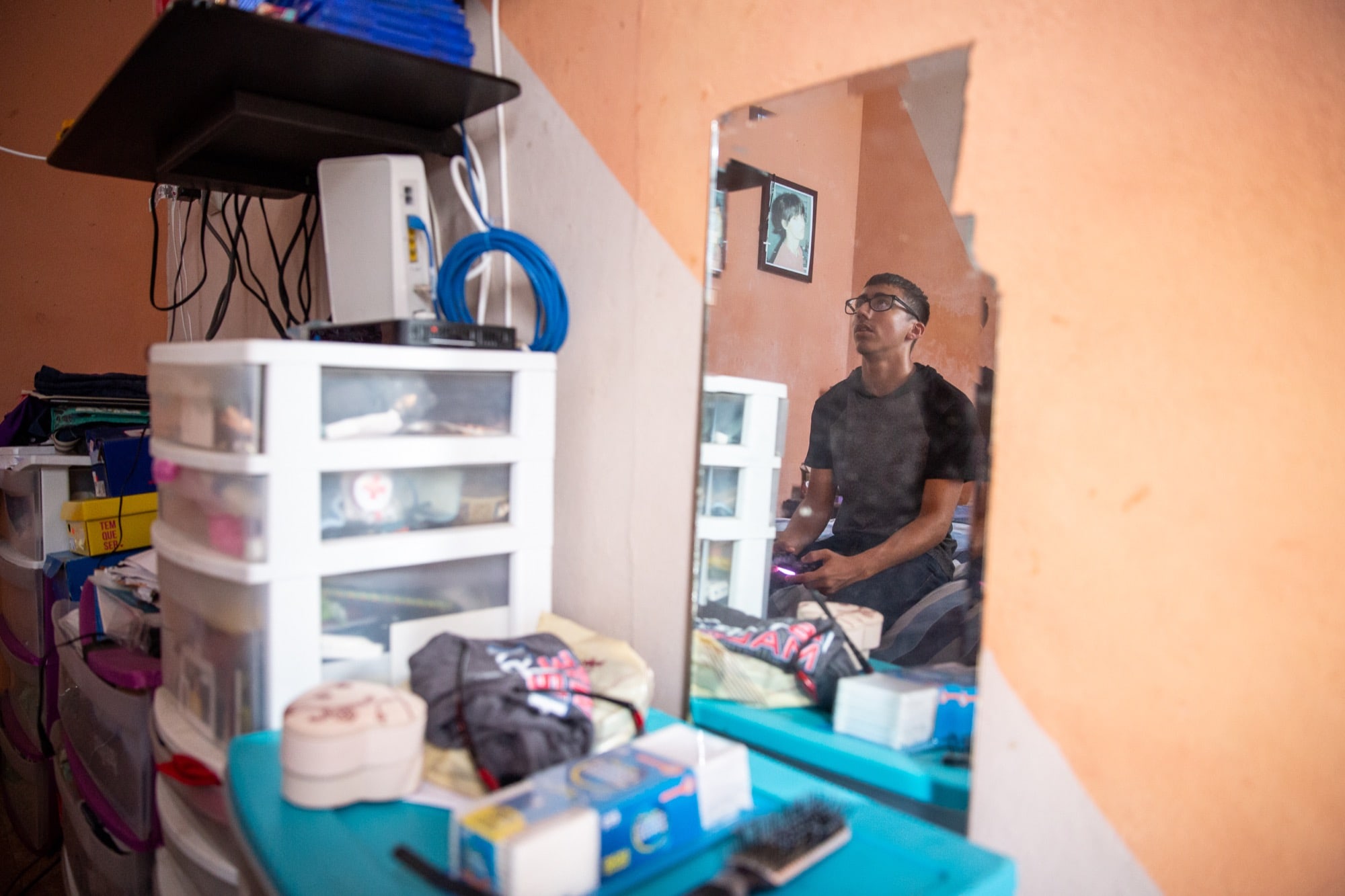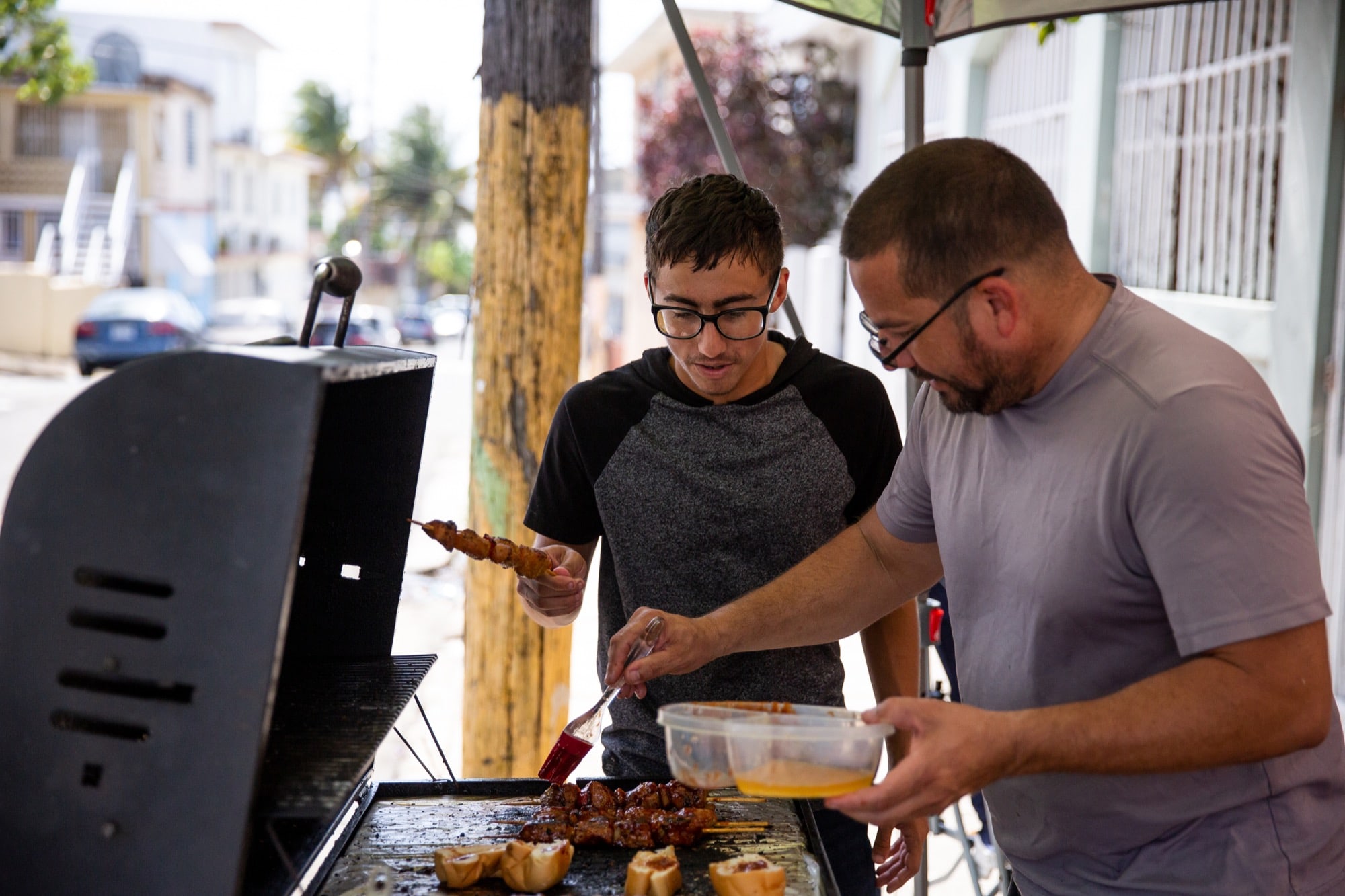Moments of great darkness: Children at the mercy of Maria
SAN JUAN, Puerto Rico – Gabriela Cornier lives in an abandoned schoolhouse in the rural community of La Vega, where holes in the floor are the size of tires and cracks in the ceiling are just big enough to let the light through.
Her family moved here after Hurricane Maria, not long after her father suffered 11 strokes and lost their home. There is no power or water, so the 15-year-old bathes with sink water in the bathroom stalls outside. Hanging light bulbs powered by solar panels give them light at night.
Hurricane Maria struck Puerto Rico in September 2017, leaving more than 95% of the island without power, potable water, cell phone service or food. Government aid was slow to arrive, and more than 4,000 people are estimated to have died in the storm’s aftermath. No one has yet counted how many children died.
As of April 2019, the island has restored 99% of its water, power and cellular sites. Almost 200,000 houses received temporary roofing from the Federal Emergency Management Agency and the Army Corps of Engineers.
A study published in April by the “Journal of the American Medical Association” found that 45% of the island’s children, almost 300,000, had their houses damaged by the hurricane.
“This leads children to have to handle situations that they often are not prepared for, and to survive, many mature quickly,” said Joy Lynn Suárez Kindy, one of the study’s authors.
According to a study published in January by the Institute for Youth Development in Puerto Rico, 30% of families said it was “very likely” that they would leave Puerto Rico because of Maria.
“Displacement is so hard on kids,” said Alice Fothergill, a University of Vermont sociologist who studies children after disasters. “So many people are leaving, and that would be a unique thing about the situation in Puerto Rico.”
Jesús Colón’s family left Puerto Rico less than three months after the storm hit the island.
The 13-year-old didn’t want to leave the island, but after his stepfather lost his mechanic’s workshop and schools began to close, his family had no option.
“My life back home was beautiful,” Jesús said. “I came (to Davenport, Florida) in November and I wasn’t expecting this.”
Adapting to the U.S. was daunting. He didn’t speak English. He missed his friends and his grandmother.
Jesús Colón’s mother and step-father, Karyleen Amaro and Abner Cintrón, worried the move to Florida and the emotional aftermath of Hurricane Maria might affect his grades. He has remained a top student. (Stacy Fernández/News21)
For those who stayed on the island, many still live in temporary or unstable housing.
“I didn't want (my parents) to feel upset because then it would make me feel upset and then we would all cry about it,” said Ángel Morales, 19. “We just don't want to remember the disaster, what happened to our house.”
Morales lives with his parents in San Juan in the only two rooms of their home not destroyed by the storm.
Many other Puerto Ricans and their children have been displaced altogether. Some have been left with the scars of traumatic stress, and some have found optimism in the struggle to survive.
“One thing that’s unique (about Puerto Rico) is the extremely high poverty rates,” Fothergill said. “It’s just off the charts, not even in the same ballpark as the 50 states.”
Gabriela Cornier, her sister Kenaisha and their father, Roberto, rode out the hurricane in their former home, but Roberto’s worsening health left him unable to work and they were evicted. The old school, ruined by time and neglect, became their refuge.
“We looked for a house and couldn't find anything,” the 21-year-old Kenaisha said. “The neighbors in the community told my dad that we should live here.”
“Here” is a little wood building that used to be an elementary school. For years, it had been a dump for debris, inhabited mainly by wild horses. When the Corniers moved in, it was infested by bugs, weeds and the stench of long-neglected horse stalls.
Roberto was hesitant to move the family into the shambles, but his daughters insisted.
“I told him, ‘Dad, it’s us against the world. I will not care, and we’re going to keep moving forward,’” Gabriela said.
Children are often seen as helpless in disaster situations, but Fothergill said that assumption isn’t always true.
“In fact, (children) encourage or actually do the physical work, or they get the job, or they're sort of the emotional glue for the family,” Fothergill said. But as empowering as taking an active role in the family’s recovery can be, “That's asking a lot of very young people, and that's got to take its toll.”
After nine months, the Corniers’ makeshift home is cleaner and safer, but the structure is falling apart, and they’re struggling to get the deed to the property.
“The little one told me, ‘Dad, if we get this, for the first time in my life I will have a house we made ourselves,’” Roberto recalled. “And when I remember that, I’m certain that I’m going to fight.”
